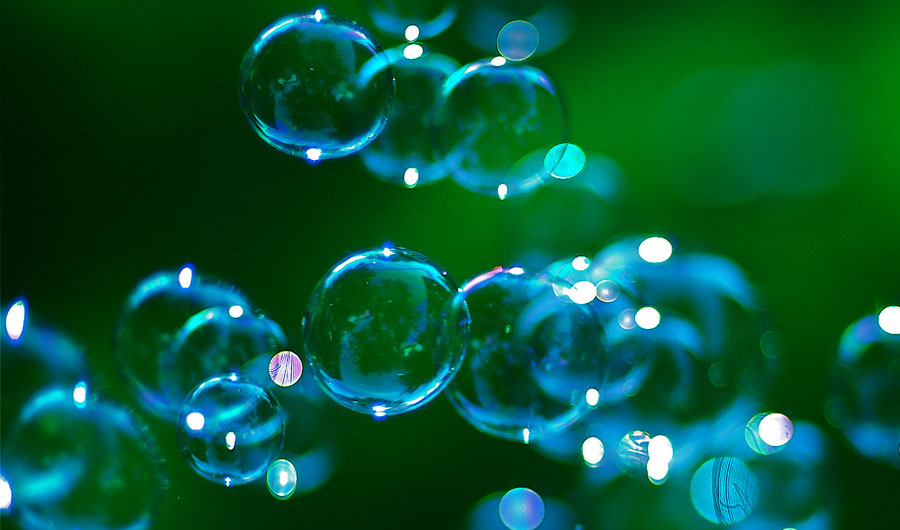To Make a Droplet into a Bubble, Use Sound
(Inside Science) -- A bubble floats in the air...and pop! It shatters into tiny droplets.
Now, physicists have achieved the reverse process: starting with a droplet and turning it into a bubble, using nothing but sound waves. Harnessing frequencies known as ultrasound, which are just beyond the typical range of human hearing, the researchers can induce a round droplet to flatten, buckle, bend, and enclose to form a small bubble.
And, unlike the soapy bubbles of a child's summer, this bubble can last a long time -- more than half an hour. "It's quite stable," said Duyang Zang, a physicist at Northwestern Polytechnical University in Xi'an, China.
Such longevity could make this type of bubble useful for scientific research, he said, such as for studying the properties and fluid mechanics of droplets and bubbles.
The researchers' demonstration, described in the journal Nature Communications, also provides a new and fast method for making bubbles, which could be applied in pharmaceuticals, cosmetics, and food and chemical industries, Zang said.
These bubbles are borne from a technique called acoustic levitation, in which high-frequency sound waves counter the force of gravity to lift small objects such as droplets, balls as wide as two inches in diameter, and even insects in mid-air.
Researchers have also used acoustic levitation to move and manipulate tiny droplets, a technique that could be incorporated into new lab-on-a-chip devices that analyze small amounts of liquid -- such as for sequencing DNA or detecting biochemicals. These devices typically transport droplets through small channels, but ultrasound could provide a way to transport droplets while keeping them untouched and isolated. One recent study showed that isolating water droplets using acoustic levitation could make it easier to test for harmful contaminants. Another showed how acoustic levitation techniques control droplets for a new printing method.
Researchers first reported that acoustic levitation could transform a droplet into a bubble in 1991. But that study, Zang said, didn't explain how the phenomenon worked. With high-speed cameras, however, the new experiments show exactly how a droplet, smaller than a grain of rice, morphs into a bubble in a mere second.
The researchers blast ultrasound onto a droplet of sodium dodecyl sulfate, a common ingredient in household cleaners. The force from the sound waves flattens the floating droplet into a disk, Zang explained. The flattened sheet then buckles, creating an indentation. When the indentation on the sheet grows big enough, sound waves bounce back and forth inside, resonating like a note on a plucked guitar string. The energy from that resonance stretches the indentation into the shape of a bowl -- and then a bubble when the lips of the bowl arc around the top and close. Tuning the ultrasound to higher frequencies produces smaller bubbles.
SDS solution droplet (10 μl) buckles downwards with increasing sound intensity at levitation position Ⅱ.
Credit: Miss Wenli Di and Mr Zehui Zhang
"It seems amazing how they change a droplet into a bubble," said Marco Andrade, an acoustic levitation researcher at the University of São Paulo in Brazil who wasn't involved in the study. "It's great because it provides a nice platform to study the physics of bubbles and the transformation from droplet to bubble." There are probably potential industrial applications, he said, but for now, this technique seems most useful for basic science.
Indeed, the researchers can only make one bubble at a time, Zang said, so some possible applications such as making foams and emulsions still need more development. "The most potential application at the moment is for fundamental research," he said.
Because the bubble persists for so long, it could be useful for culturing cells or assembling nanoparticles on the bubble's surface -- the latter of which Zang is now working on with colleagues. When nanoparticles are embedded in the spherical surface of a bubble, he said, they might arrange themselves into unique structures or attain novel properties.


